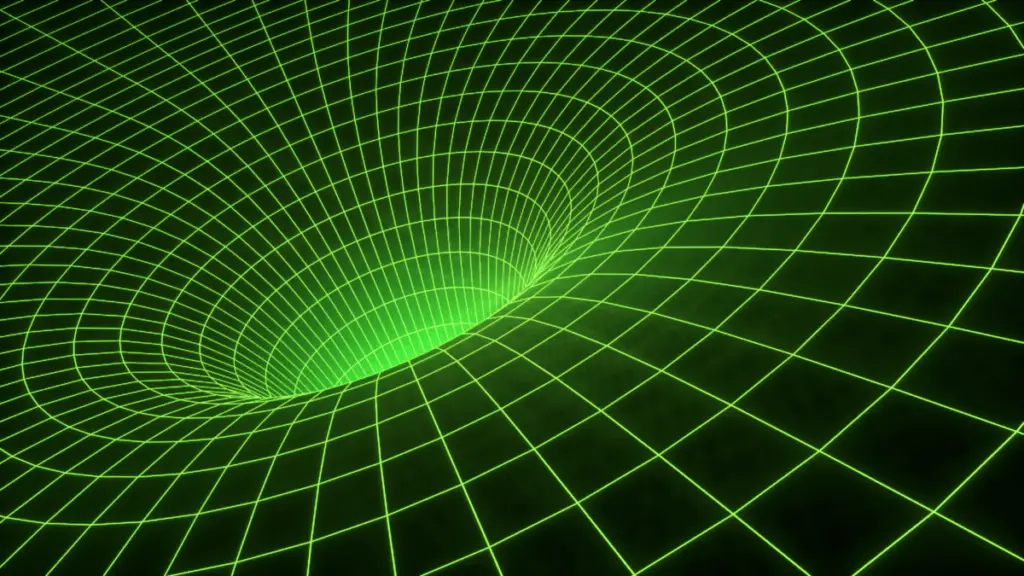
Have you considered the issue of time travel as a legitimate study subject for the 21st century? The film industry tends to romanticize time travel when they show massive space crafts that move at the speed of light, enabling rapid interstellar travel; or people tunneling through wormholes to wind up in a whole other part of the galaxy. But according to science, none of it is as simple as it sounds.
It isn’t likely that a human can hop into a machine and travel back to the renaissance era, or even last week; but oddly enough, time does not seem to move as linearly as one might expect, and this raises some interesting questions. For instance, did you know that time moves slower when you’re traveling in an aircraft?
Similarly, the satellites that orbit the earth at super-fast speeds don’t record time the same way as devices on land. Time travel is one of the biggest mysteries in the universe, and this article looks at how the math might work and why we may not be able to move through time anytime soon. Read on to learn more.
What do NASA Satellites Tell Us about Time?
As we mentioned above, a human can’t use a machine to travel back or forward in time. However, people time-travel all the time: For instance, every time you celebrate a new birthday, you have traveled one year through time, and we only fail to see it because we all travel through time at roughly the same speed: 1 second per second.

Now, the satellites put up by NASA give us a glimpse of what the universe looked like billions of years ago because the light that we see from far-away galaxies has taken a vast amount of time to reach us. By now, some of those stars we see from billions of light-years away have already died out, and outer space looks very different today than what we’re able to see.
But getting back to the idea of time travel, what it really means is the capacity to travel faster than 1 second per second.
Albert Einstein’s Relativity Theory
Over a century ago, Einstein gave us a new way to look at time and space. With his theory of relativity, he suggested that time and space are inextricably linked. Einstein showed us that nothing in the entire known universe could travel faster than light (186,000 miles per second, or 299,792,458 meters per second).
So how does relativity affect time travel?
Einstein’s theory tells us that if you travel fast, time will appear to slow down. It has been proven to be true many times by scientists from all parts of the world. Let’s take one experiment as an example:
Two clocks were set simultaneously, and one clock was placed on an airplane and flown around the world while the other stayed on earth. The airplane was one of the fastest planes in production at the time, and it flew in the same direction as the earth’s rotation.
When the plane had circled the world and landed, scientists removed the clock aboard to compare time with the clock left on the ground. Scientists found the clock on the plane to be behind by a tiny fraction of a second, meaning that time was moving slightly slower on the plane, and its clock was registering time in a different format than 1 second per second.
Is Time Travel Possible According to the Theory of Relativity?
The speed of light has a profound impact on time travel. Think for a moment if we could know what was happening with our loved ones on the other side of the world right now, rather than the second-long delay we get when making phone calls and video calls. The problem is, according to the theory of relativity, nothing can move faster than the speed of light, and that includes the electromagnetic waves that carry the signals from our phones and computers.
Using this framework that the speed of light is a universal constant, Einstein postulated that we could only solve the question of time travel if somehow we managed to surpass the speed of light. Let’s consider the law of causality, which also follows from the argument that nothing can move faster than light.
Causality states that every action/effect follows a cause, and in the case of time travel, scientists are trying to go into the past to set in motion events that occurred before their own birth. It is an attempt to put the effect before the cause. It’s just not possible.
But this same constancy of light speed also tells us that space-time is also not a constant but is somewhat relative. A direct result of this relativity is that time appears to slow down when objects move at high speed.
So what would happen if we moved objects faster than light? For starters, the law of causality would not apply anymore, and we would also start looking at time differently rather than just forward or backward. However, Einstein’s theory also tells us that there’s no real difference between mass and energy. Any particle with a “rest mass” would require an infinite amount of energy for that mass to reach and exceed the speed of light. Since we don’t know of any particles that don’t have a rest mass, we can conclude that traveling backward through time would be impossible.
Can I Travel Forward in Time Using Wormholes?
Stephen Hawking spent a significant portion of his life studying black holes and the possible use of wormholes for time travel. He suggested in his book “Brief Answers to the Big Questions” that we could be able to move through space-time using what’s known as Einstein Rosen Bridge, or a wormhole that connects two separate parts of the universe.
The matter will then be moved through one opening of a wormhole and come out of another part of the universe or an entirely different universe if the math allows it. Bear in mind that for anyone to punch a hole through space-time and make any of this possible, they would have to come up with a way to fuel this tunnel, and that requires far more energy than we can access or generate at this point in time.
The only kind of energy that would most likely succeed at creating an opening through the fabric of space-time is negative energy (an entity with less than zero energy) or the total energy of a star. The problem with this is that it’s mostly theoretical. Nobody has managed to show how matter can tunnel through this wormhole to appear in distant locations in space-time, or much less, move through time to another era in our history.
Some scientists suggest that by fiddling with the mathematics of a theoretical wormhole, it may be possible to tweak it to create a gateway to two different time periods in space-time. But how much of this is actually possible? There’s no easy way for any of this to occur.
What is space-time?
Time is described in physics as a dimension similar to height or width. So when a person travels from one point to another, say, from your car to your office, you’re moving through a direction in space, interacting with all the other spatial dimensions height, length, and width. However, you are always moving forward in time (time being the fourth dimension).
It is why space and time are linked together in a type of fabric that holds the dimensions together. To give you an example, think of space-time as spandex stretched and held at four points. When you place something that has a mass on this spandex, the object creates a sort of dimple. That dimple can be thought of as a physical manifestation of space-time adjusting itself to accommodate the object.

Now, when our imaginary four-dimensional spandex bends to accommodate the large object, this leads to smaller objects within this space moving along a curved path – and this path is what we know as gravity. Think of our Sun sitting and affecting space-time in a way that creates a dimple or curvature. That curvature influences planets in a way (orbit) that we understand as a result of gravitational attraction.
So in terms of what’s possible mathematically, one can move along three dimensions (length, width, height) going forward or backward, but not through time. In the fourth dimension (time), you can only move in one direction, forward.
Will Time Travel Ever Be Possible?

You can’t travel back in time. Theoretically, you can say that something is traveling back in time, but for matter to move in this direction, it would require additional elements to this problem that we just don’t have access to at this moment. Here are some possible scenarios that would facilitate time travel as we understand it to give you an idea. There is no indication that at the current pace of technology, anyone will be able to create a working time machine – a lot would have to change before scientists can fully explore these concepts.
1. A Unified Theory of Everything
Suppose someone finally came up with a theory that explains all of creation. In that case, scientists could test Einstein’s theories to see whether time travel can happen – but even in this scenario, we would still need far more advanced technology than what we currently possess.
2. Move an Object Faster than 186,000 miles per second
If you could figure out a way for objects to move faster than the current universal speed limit (which is the speed of light), this would open up new possibilities that could theoretically question the whole concept of causality and create the potential for actual time travel. This is all very hypothetical. However, there is currently ongoing research into faster-than-light travel, but nobody has made any significant headway.
3. Create a Wormhole
A wormhole is a theoretical tube in space-time that we might one day use to transport people or objects from one point in space-time to another. There is an argument that the same tunnels could be used to move between different points in time. Still, for a wormhole to be used in this way, it requires stabilization – which means finding a spot in space-time with nothing at all (negative density), and physics tells us that there are no absolute vacuums in space.
4. Locate and Use a Cosmic String
Cosmic strings are believed to be narrow tube-like structures in space-time and are thought to stretch all across the universe, holding a tremendous amount of mass. With such a large mass, these tubes could bend space-time around them, and scientists believe they are the key to time travel becoming a real possibility. Two such large strings could bend space-time so much that a new configuration would appear to introduce new possibilities to how time moves in this three-dimensional universe.
Multiple scenarios have been put forward by enthusiastic scientists when pushing for the study of time travel. For the most part, these are theories that are not only difficult to prove but seem to lack foundational science (or maybe our understanding of energy and the workings of the universe are still too rudimentary, and we lack the fundamental knowledge that could more realistically help us study time travel).
However, this is not something we have the capacity to try at the moment, so until humanity evolves into a Type II civilization, we should leave it here for now.
Time Travel Is Not Possible For Now
The only quantifiable form of time travel we know of is the process of moving forward in time, and by that, we mean the natural state of moving into the future with each passing second. So, for instance, if you wanted to know what the world will look like a thousand years from now, it may be possible if you built a spacecraft that can travel near the speed of light and stayed on it while traveling at top speed for an ‘x’ amount of time. You will find that the planet has aged perhaps a thousand years, while you have aged maybe only a week.
This way, you will have found a way to get a glimpse of the future without a time machine – the only problem is that you will have to figure out a way to go back in time to see your loved ones again.
In Conclusion
A few years before Stephen Hawking died, he worked on the problem of time travel, to which he wrote that he had “experimental evidence” that time travel was not possible. Back in 2009, Hawking arranged to have a party for time travelers, and his solution was to send out invites after the party had taken place; that way, only people from the future would show up.
So what happened? He sat and waited a long time, but nobody showed up. In his book “Brief Answers to the Big Questions,” the astrophysicist addressed time travel again and noted that scientists needed more resources allocated to this problem if humanity ever wanted to make sense of one of the most controversial scientific problems in history.
We still don’t have a unified theory that connects Einstein’s theory of gravity with quantum mechanics. So, for now, the question of whether we can travel back through time will have to remain a mystery.
FAQ
1) Is it possible to travel back in time?
The short answer is No. However, we understand from multiple experiments that time works differently on satellites and airplanes than those on earth, and speed seems to slow down the movement of time. But time travel at speeds faster than 1 second per second is currently not possible.
2) Is time travel theoretically possible?
It is possible (theoretically, that is) to travel through time without the grandfather paradox. However, most mathematical models designed to prove this theory (such as one by a student from the University of Queensland) have not gone through extensive peer review or gained the mainstream scientific community’s support. It is still challenging to prove the possibility of time travel. Most scientists have only managed to put forth theories – some of which have been studied and critiqued widely without any substantial effort to prove or disprove their claims.
3) What is the theory of time travel?
Albert Einstein’s theory of relativity states that time speeds up or slows down based on how fast you move relative to another object. So, in theory, if you reside in a spaceship that moves at the speed of light, you would age much slower than your twin here on earth. The other aspect of his theory of relativity suggests that gravity can warp time.
4) How does space-time work?
We like to think of space as vast and flat, encompassing all that we can see in the sky and beyond, but space-time isn’t flat or constant; it is a curved fabric that can be warped by matter and energy. It also behaves in ways that one might not expect: Time might appear to move slower near super-massive objects because their gravitational pull bends space-time.
5) What is space-time made of?
Space-time is a mathematical model that combines the three dimensions of space and adds the fourth dimension, time, to form space-time, a four-dimensional manifold. The famous Einstein theory of relativity teaches us that space isn’t a flat, unchanging field but rather a fabric that’s woven along with time. It is a continuous, smooth fabric curved or bent by objects consisting of large amounts of matter such as stars, planets, or energy.
6) Can you go fast enough to travel back in time?
Traveling faster than light does not automatically lead to backward time travel. For this to occur, there needs to be a particular set of conditions. The main challenge here is that anything with mass cannot move faster than the speed of light, so a new kind of energy would have to be created to facilitate this mass’s movement at incredible speeds. Such energy has not been discovered yet.
References
Featured image courtesy of Farm 6 Media and Shutterstock.
- Is Time Travel Possible?, NASA, https://spaceplace.nasa.gov/time-travel/en/, Accessed 27/03/2021.
- Time Travel, Wikipedia, https://en.wikipedia.org/wiki/Time_travel, Accessed 27/03/2021.
- You Can’t Travel Back In Time, Live Science, https://www.livescience.com/amp/1339-travel-time-scientists.html, Accessed 27/03/2021.
- Time Travel Theoretically Possible, NPR, https://www.npr.org/2020/09/27/917556254/paradox-free-time-travel-is-theoretically-possible-researchers-say, Accessed 27/03/2021.
- Time Travel Theories, Paradoxes, & Possibilities, Space, https://www.space.com/21675-time-travel.html Accessed 27/03/2021.
- Time Travel: Separating Fact From Fiction, Research Gate, https://www.researchgate.net/publication/231072061_Time_travel_separating_science_fact_from_science_fiction, Accessed 27/03/2021.
- According To Current Physical Theory, Is Time Travel Possible, Scientific American, https://www.scientificamerican.com/article/according-to-current-phys/, Accessed 27/03/2021.
